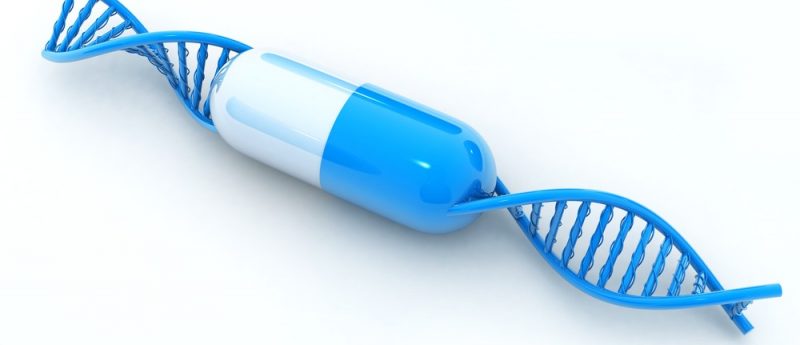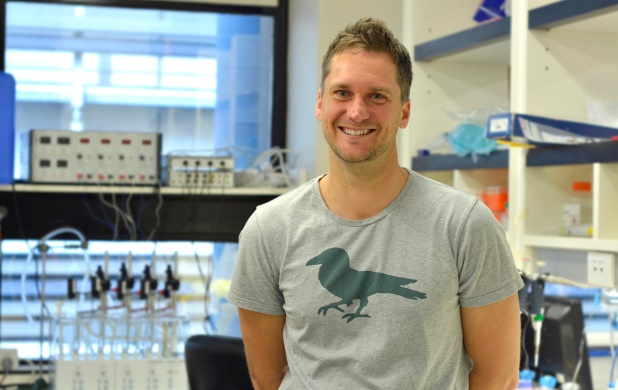Using organoids to identify new therapeutics: an interview with James Hudson

In this interview, James Hudson discusses research on the regenerative potential on immature cardiac organoids and how organoids can be utilized in drug discovery.

James Hudson
James Hudson is Head of the Muscle Tissue Engineering Laboratory, School of Biomedical Sciences, The University of Queensland (Australia) NHMRC RD Wright Biomedical Fellow and National Heart Foundation Future Leader Fellow. He completed his PhD from The University of Queensland in 2011 in directed differentiation of stem cells into cardiomyocytes and tissue engineering, and postdoctoral training under the guidance of Prof Wolfram-Hubertus Zimmermann. Dr Hudson returned to Australia in 2013 and ran the Cardiac Regeneration Lab at The University of Queensland with Dr Enzo Porrello until April 2017 when he became Principal Investigator of the Muscle Tissue Engineering Laboratory.
The laboratory is interested in understanding the molecular mechanisms and biological interactions that guide the formation, properties and function of human cardiac organoids. It recently developed miniaturized screening platforms for cardiac organoids and aim to discover new targets for regenerative medicine as well as use these platforms to develop new therapeutics.
At ISSCR 2017, you presented a paper on the innate regenerative potential of the adult human heart and the development of a cardiac organoid model. Can you explain how this research came about?
My PhD student, Holly Voges, presented her work from our lab, and some of the initial work has been published in Development. This came about because we wanted to see how mature our human cardiac organoids were in terms of regenerative capacity. In the field, many of the experiments in engineered heart tissue have looked at electrophysiological or functional properties, but not regeneration. Cardiac regeneration occurs in immature mammalian hearts but not in adults (Porrello et al, Science, 2011), therefore we sought to determine whether our fairly immature human cardiac organoids also had an intrinsic regenerative capacity.
ISSCR 2017 seemingly saw a large increase in the volume of research presented on organoids. Why do you think that was?
I think people have known for some time that our cell culture models in 2D on hard plastic are not the best representation of organs in the body. Technology has rapidly advanced and now enables researchers to develop 3D human organoids which more accurately model the complexity of human organs in vivo. Perhaps the best potential of this work is to use it as a model system for drug discovery, as the majority of drugs currently fail in clinical trials due to a lack of efficacy.
What are the challenges for developing organoids models for cardiology?
We still have some way to go to make a fully mature adult cardiomyocytes from human pluripotent stem cells. While we (Mills et al, PNAS, 2017) and others have made very important progress towards this goal, there is still more work to be done.
How can we use organoid models to understand concepts such as the innate regenerative potential of the heart?
We can use human cardiac organoids to determine the biological processes and factors driving regeneration and also for screening for new therapeutics in vitro.
How close are we to existing engineered models replacing in vivo models? What more is required to get there?
I do not think we can ever fully replace in vivo models. If we ever were able to fully model the complexity of the in vivo system (including inter-organ communication etc.), it would be cost-prohibitive. Where I think organoids have their place is screening and mechanistic research of biology in a human tissue. Once the most promising leads have been discovered in this system, they will then require testing in vivo disease models (if they exist), prior to pre-clinical development. I think the two major advantages of human organoids which may help reduce drug failure due to lack of efficacy are:
- Discovery studies covering a much larger array of factors (and potentially combinatorial screening). This enables only the very best factors to progress to the next stages in therapeutic development.
- Study of biology in a human tissue, rather than animal tissue. The rodent heart has many biological and functional differences to the human heart.
What are your predictions for the development of engineering models in the future?
I think we will continue to improve our models and make them closer to human adult hearts. I think we can continue to make them even better and also learn a lot about the biology of the heart along the way. In saying that, they are already very useful in their current format, so there will continue to be a lot of research using them for the discovery biology applications and screening of new therapeutics.
Further reading
Voges HK, Mills RJ, Elliott DA, Parton RG, Porrello ER, Hudson JE. Development of a human cardiac organoid injury model reveals innate regenerative potential. Development. 144:1118-1127 (2017)
Porrello ER, Mahmoud AI, Simpson E et al. Transient Regenerative Potential of the Neonatal Mouse Heart. Science. 331 (6020), 1078-1080 (2011).
Mills RJ, Titmarsh DM, Koenig X et al. Functional screening in human cardiac organoids reveals a metabolic mechanism for cardiomyocyte cell cycle arrest. PNAS. 114 (40), E8372-E8381 (2017)